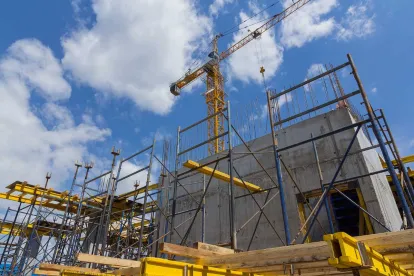For employers in the construction industry, the Department of Labor’s (DOL) proposed revisions to Davis-Bacon Act (DBA) regulations on prevailing wages on public projects can mean significant adjustments to their practices.
Created in 1931, the DBA requires contractors and subcontractors working on federally funded public works projects over $2,000 to pay employees no less than local prevailing wages and fringe benefits for corresponding work on similar projects in the area.
In March 2022, Labor Secretary Marty Walsh announced plans to reform the DBA regulations. For the first time in 40 years, DOL published a Notice of Proposed Rulemaking (NPRM) to update DBA regulations to “reflect the needs of today’s construction industry.” Most projects arising from the Biden Administration’s $1.2 trillion Infrastructure Investment and Jobs Act will be covered by the DBA, so construction companies planning to bid for these jobs or take on work subject to its provisions need to be aware of the possible changes and how they can affect their overhead and business practices.
Definitions
The NPRM includes changes to definitions that would extend the DBA’s coverage to more public works projects. For example, the NPRM seeks to clarify the definition of “building or work” to include construction activity involving a portion of a building, structure, or improvement or installing equipment into a building, structure, or improvement.
Further, companies that manufacture or fabricate offsite building materials may be affected by the proposed revision of the “site of the work” definition. The NPRM seeks to apply the definition of “site of the work” to “significant portions” of a building or work. Usually, these companies are excluded from coverage, unless the work is performed at facilities specifically established by the contractor to perform the contract or project. However, depending on the portion of work performed, they may be covered under the NPRM.
Acting Wage and Hour Division Administrator Jessica Looman said, “[G]iven recent unprecedented investments in our nation’s infrastructure, this comprehensive regulatory review is necessary to ensure employers on federally funded or assisted construction projects pay fair wages to the workers who build our roads, bridges, federal buildings and energy infrastructure.” The DOL is pursuing this goal, in part, by reinstituting a three-step process to define prevailing wages, which was used from the 1930s to 1980s. Under this process, first, any wage rate paid to a majority of workers would be used as the prevailing wage. Second, if there is no wage rate paid to a majority of workers, then the wage rate paid to the greatest number of workers would be used, provided it is paid to at least 30 percent of workers (“30-percent rule”). Third, if the 30-percent rule is not met, the weighted average rate would be used.
Other Proposed Changes
The NPRM also seeks to make other revisions, including:
-
Periodically updating prevailing wage rates to address out-of-date wage determinations;
-
Giving broader authority to adopt state or local wage determinations under certain circumstances;
-
Changing the language in the regulations to reflect modern construction practices more accurately;
-
Updating the prevailing wage system to ensure the prevailing wage rates are keeping up with actual wages;
-
When there is no survey data, providing supplemental rates for key job classifications; and
-
Providing greater protections for workers.
Moreover, employers can expect an uptick in DOL enforcement if the NPRM is adopted. The agency has announced that it will be hiring at least 100 additional investigators for the Wage and Hour Division.





 />i
/>i

